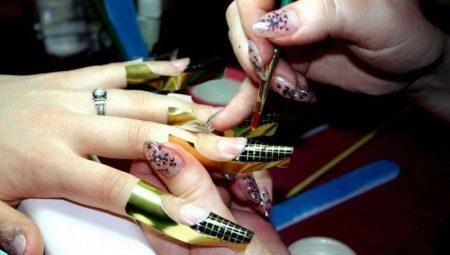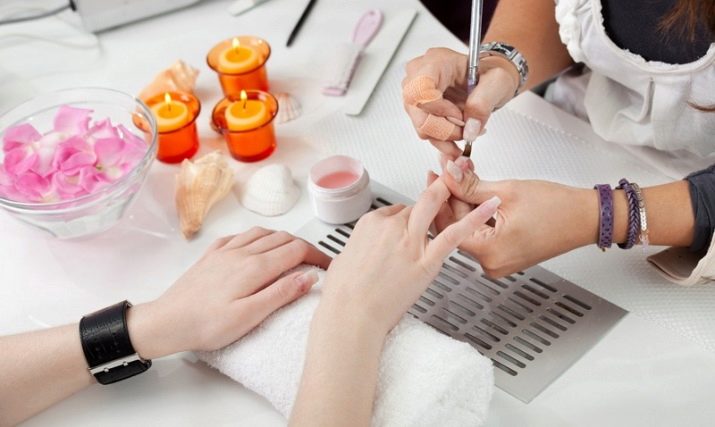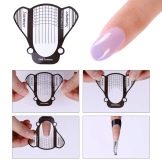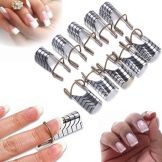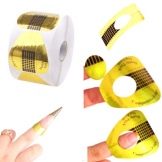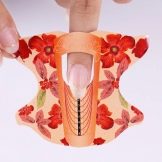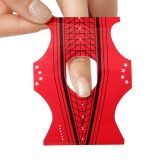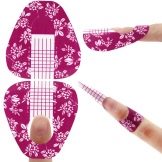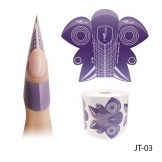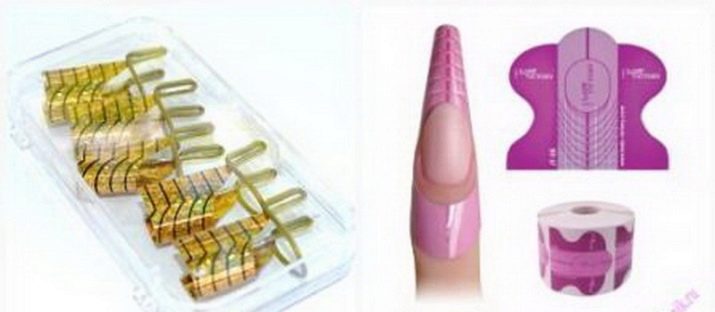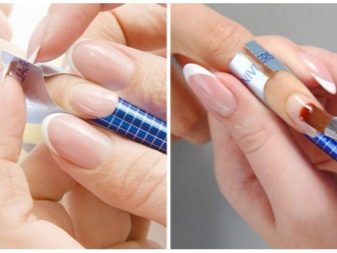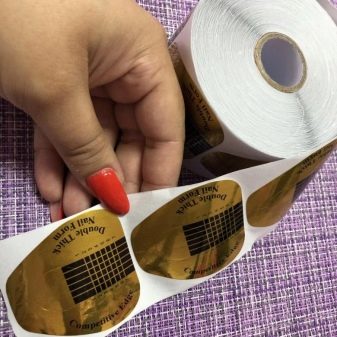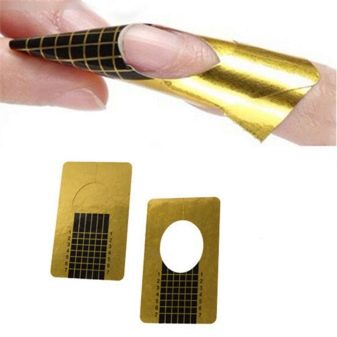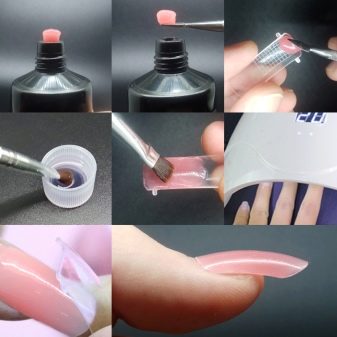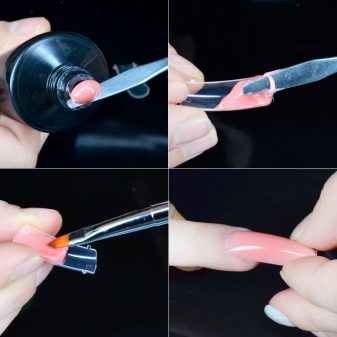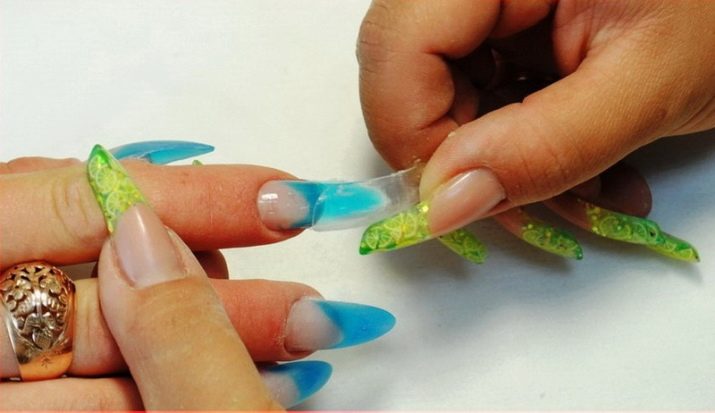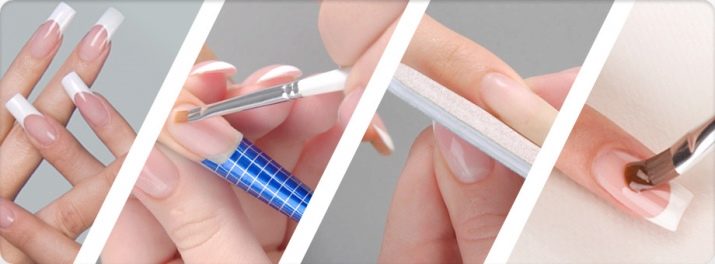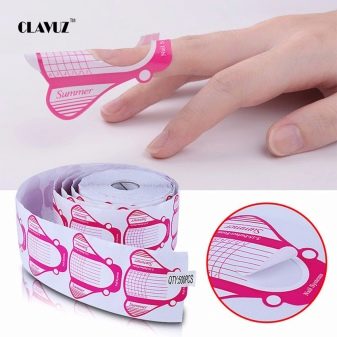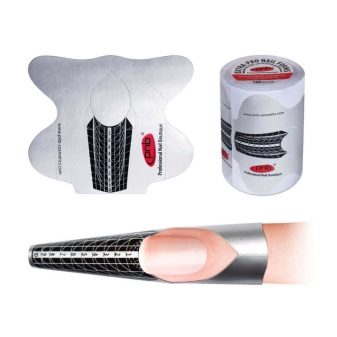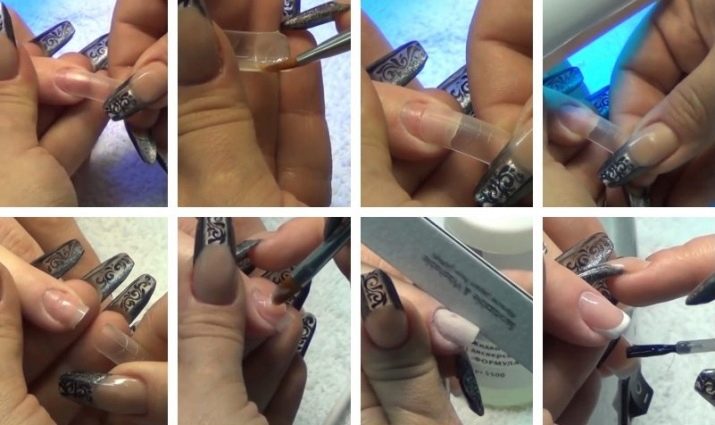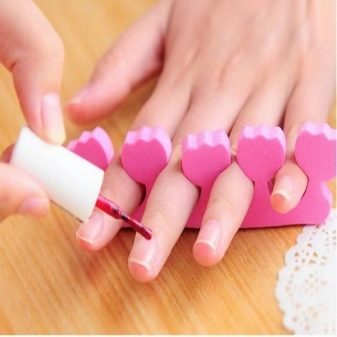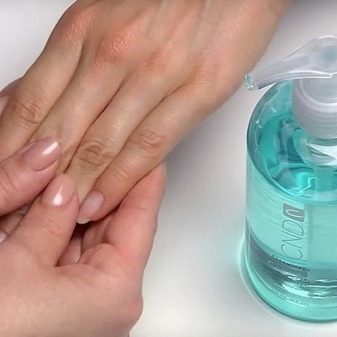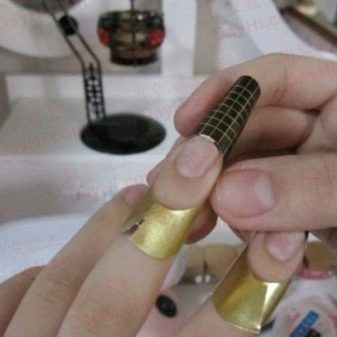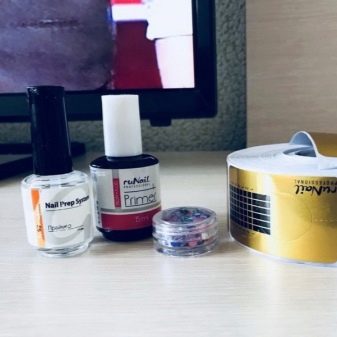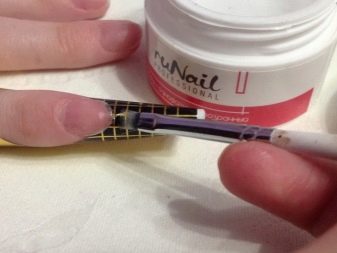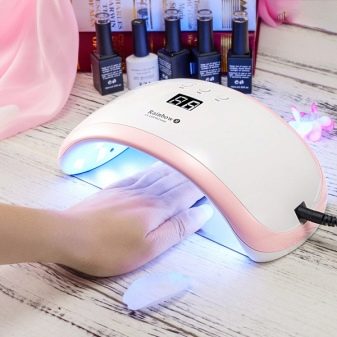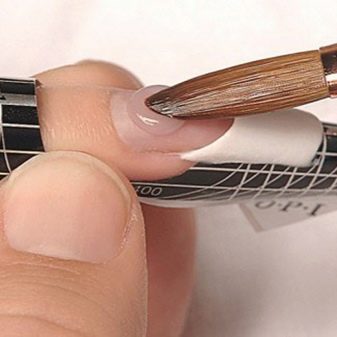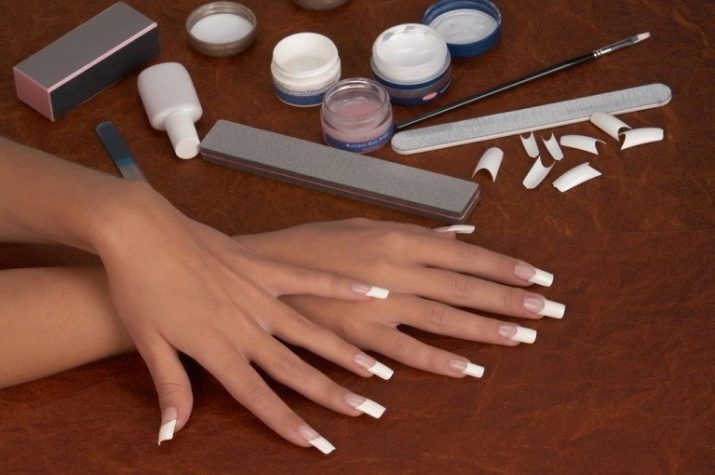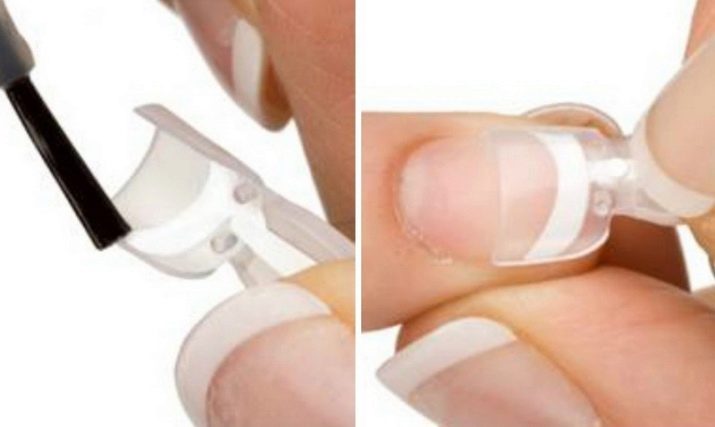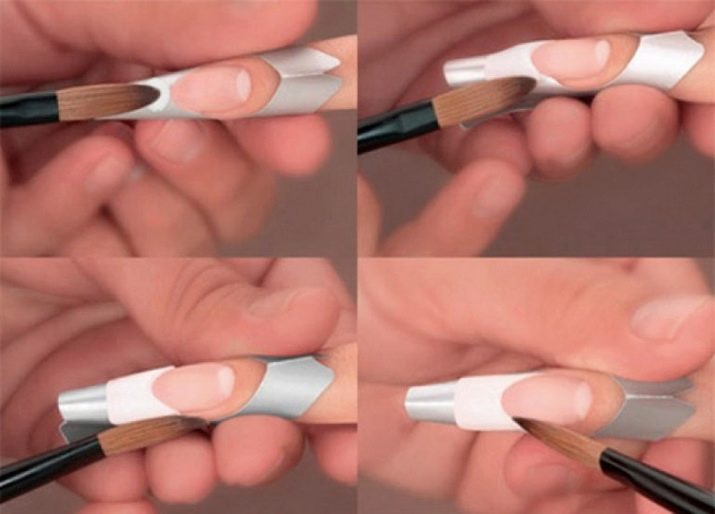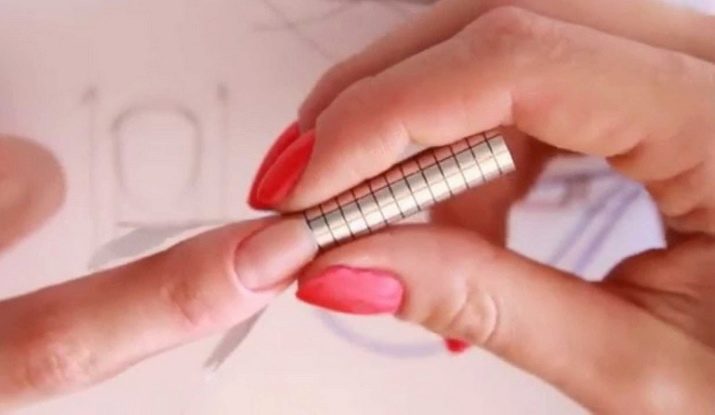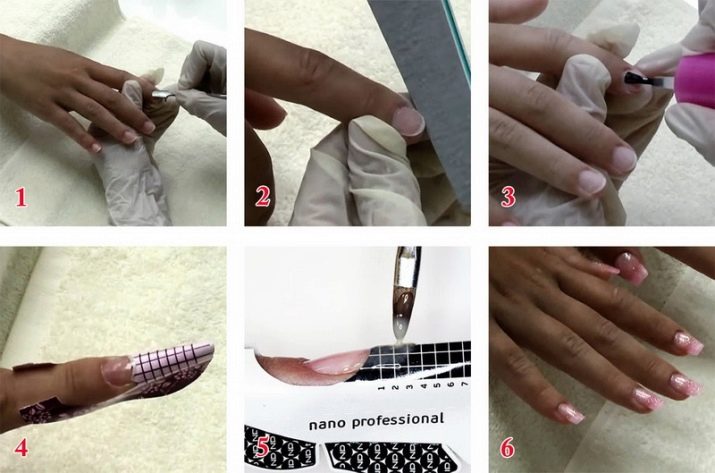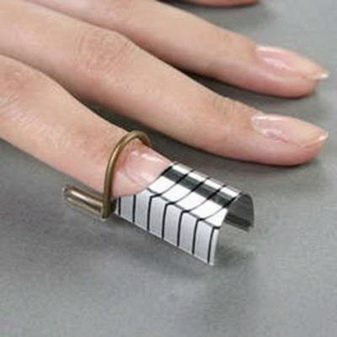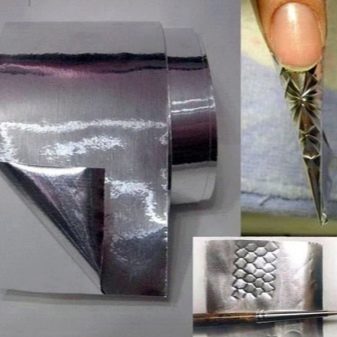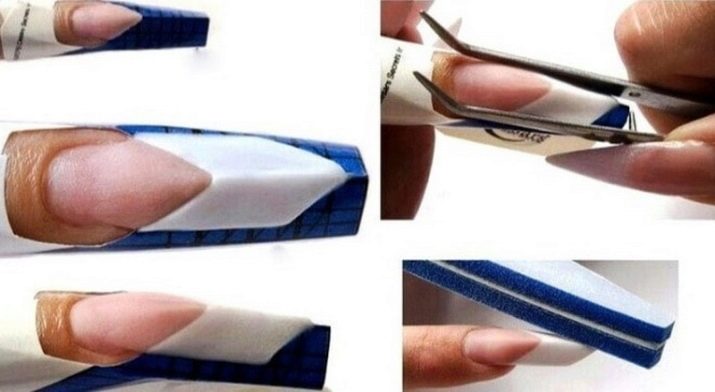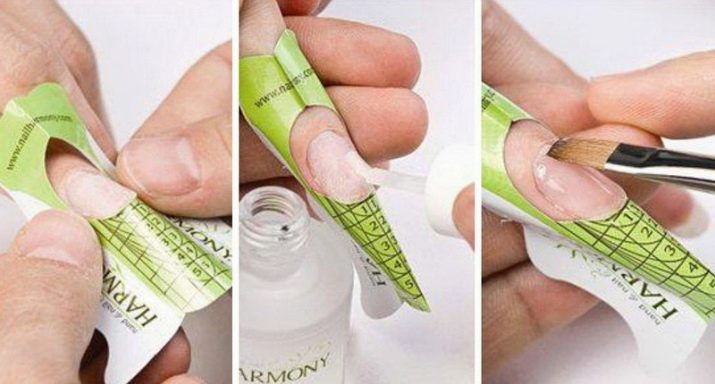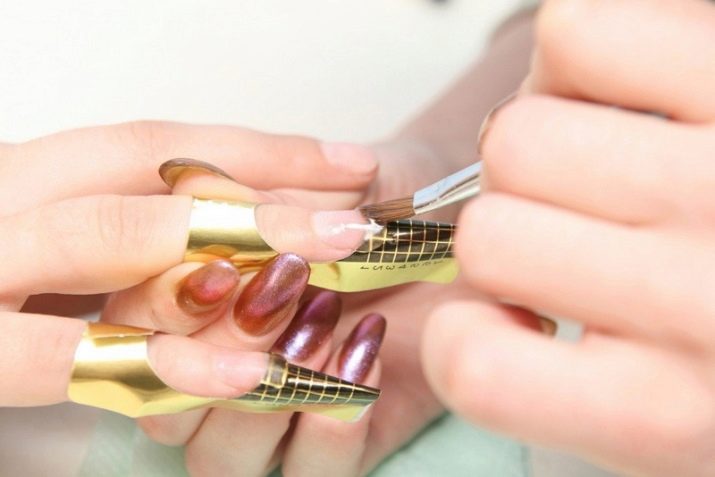According to statistics, only one in five of the fair sex can boast with naturally strong nails. Given this circumstance, you should not be surprised at the growing popularity of forms for building up: special templates that allow you to realize a lot of original ideas. This is due not only to the large selection of such devices, but also to the technology of their use, which contributes to the achievement of an optimal result.
What it is?
As already noted above, the forms are the templates used to give the nails the desired customer characteristics: first of all, length and shape. The solution to this problem involves the use of one of two modeling materials: gel or acrylic, each of which has its own set of advantages. The simplicity of caring for the nails that have been enlarged in this way, suggesting correction at least once a month, also deserves attention.
Using the technique of building with the help of templates, nails can be given a very different shape: oval, rectangular or pointed. Another advantage of the described technology is the natural appearance of the plates, achieved due to the smooth transitions and the absence of noticeable bulges. The only drawback of such a build-up is the complexity that requires a sufficient level of competence from the performer. For this reason, many beginning masters prefer tipsy - plastic blanks attached to the nails, which are much easier to use. The noticeable disadvantage of this solution is a less natural appearance that suits not every woman.
Varieties
There are two main types of forms for building, each of which assumes its own type of fastening: lower or upper. Practice shows that both species have their obvious merits, making them more detailed consideration justified.
Lower
The first templates of this type appeared a long time ago: several decades ago. The material of such devices was paper, which naturally affected the quality of the procedures. Being very soft, such forms were often crushed, because of which the buildup had to start anew. Gradually, primitive paper templates were abandoned in favor of more advanced products, the material of which allowed modeling the tips of various forms and reducing the likelihood of creasing to a minimum.
Depending on the characteristics of the application, the lower forms are single and reusable. The former, also referred to as soft, have a democratic price and do not provide for the possibility of reuse. Such templates are very popular, and the materials used for their manufacture can be:
- paper with polymer or metal that is applied to the contact layer;
- high molecular weight compounds or plastic (often such forms are transparent, which is especially important for the masters of modeling and design);
- the thinnest metal sheets (foil);
- combinations of the above options.
Another advantage of the considered variety of templates for building is their compliance, which allows you to easily and precisely adjust them to a variety of nails.
As for reusable lower forms, in most cases metal or Teflon (polymer, also known as fluoroplast-4) is used for their manufacture, whereas plastic is used much less frequently. Such products are ten times more expensive than disposable templates, however, due to their durability, they quickly recoup the investment in them.
Another tangible advantage of reusable molds is the lack of tendency to warp, the appearance of gaps and the penetration of the modeling material into the resulting “gaps”. To achieve an optimal result, it is enough for the master to select a template that perfectly matches the nail of the client. Reusable forms for building apply the same way as disposable. Their only difference is the need for disinfection carried out after each completed procedure.
Upper
Externally, these patterns are similar to the tips and are blanks made of silicone. They began to be used relatively recently, and their main advantage is the simplicity of the extension being performed. Especially these devices are appreciated by novice masters who want to get nails of the same shape and reduce the amount of consumable materials. Using the top templates is very simple: just apply a gel or acrylic on them, and then press them tightly to the nail plate. Having waited for the simulation material to solidify, the form remains to be removed, spending ¾ hours for the whole procedure.
Given the speed of implementation, which differs the considered method, many experts call it "express building". In addition, it is very profitable to work with the upper forms: being several times more expensive than disposable templates, they easily withstand up to 40 uses. Despite the fact that the upper forms are very similar to liquid tips, their application technologies have one key difference. Through the first, the finished nail with a glossy surface is simulated, while the latter only form the substrate that needs to be covered with a gel.
How to choose?
One of the main criteria determining the choice of the lower template for building is the shape of the planned nail. To solve this problem, it is enough to look at the markup of the products used: divisions, which allow spreading the material with maximum convenience. When choosing the most appropriate option, experts recommend to consider the following rules.
- If you need to make nails that have a square shape, it is best to give preference to patterns with lines intersecting at right angles.
- In a situation where square nails need to be given a “softened” shape, it is justified to use patterns with slightly curved transverse lines.
- In order to grow the almond-shaped or oval-shaped nails, it is desirable to use templates whose transverse lines have a strong bend.
- Creating nails in the form of a stylet involves the use of templates, the marking lines of which converge at an acute angle. Experience shows that such devices are suitable for other variations of extensible nails, for example, sharp or oval.
As for the lower patterns, which can be called universal, these are oval shapes. They can be used in the vast majority of situations, allowing you to create nails of almost any architecture. To build on the legs requires special bottom patterns, having the shape of a horseshoe. Such devices can successfully perform both gel and acrylic modeling, but it is unlikely to be able to build up fingernails with their help.
How to grow nails?
Selecting the top forms, you should pay attention to their size. To avoid wrinkles, the applied patterns should cover the sides of the plates without tension. It is also worth considering that such forms are not recommended for use with trapezoid or too wide nails.When choosing templates of the most appropriate form, professionals advise you to be guided not only by taste preferences, but also by the convenience of wearing extended nails. The latter depends on the lifestyle of the woman and the characteristics of her work: circumstances, ignoring of which can cause many inconveniences.
Having decided on the most suitable forms, you can proceed to the procedure of building. For the lower patterns, it implies the following sequence of actions.
- The use of antiseptic. Hand treatment with this tool allows you to avoid the development of infection, penetrating through microscopic damage to the surface tissue.
- Preliminary manicure. This event involves moving the cuticle back, cutting the free edge of the nail to a length of 1–2 mm and sanding the plate for optimal contact with the modeling material.
- Treatment of the nail with an adhesion base: a liquid agent, also called a primer.
- Attaching a template. The latter must be compressed before it acquires an oval shape and put on his finger so that it looks like an extension of the nail plate. To achieve the best fit in size and shape, the pattern can be carefully adjusted using scissors (provided that it is not reusable).
- If, on the first attempt, the correct formulation of the form was not achieved, the operation must be repeated until the desired result is obtained. As soon as the template clearly coincides with the nail, it must be firmly fixed in order to avoid spreading the modeling material.
- Applying to the form of a gel or acrylic with an appropriate brush. In order to give the extensible nail symmetry and the required length, the master should take advantage of the special divisions applied to the pattern used by him.
- If the stackable nail has a greater length, experts advise applying the material in 2 layers.
- UV nail treatment. This step allows you to reduce the hardening time of the modeling material.
- Withdrawal form This operation should be carried out carefully and only after the nail finally hardens. If the form does not lag behind, it is necessary to dry the material in the UV lamp.
- Elimination of minor defects. To give an enlarged nail an ideal look, you need to carry out its final processing, performed with the help of a buff.
Provided that the master has sufficient skills, the procedure of nail extension according to the described scheme lasts 1.5-2 hours.
The second solution to the described problem, involving the use of upper patterns, also deserves attention. Nail extension with their help is performed according to the algorithm presented below.
- Preliminary preparation. It is carried out in the same way as in the case of the lower forms.
- Selection of suitable templates. The main criterion to consider is the width of the nail plate. It is also worth remembering that between the last and the applied form there should be a place for putting the modeling material.
- Putting the base on the nail. This material should cover the entire surface of the plate with a uniform thin layer (it should not be dried).
- Putting the modeling material on the template. To ensure intermediate polymerization, it is necessary to place the nail under a UV or LED lamp.
- Applying the form to the nail plate. Experts recommend performing this procedure so that the edge of the template approaches the cuticle area at an angle of 45 °. Next, it remains to carefully press the device used to evenly distribute the material.
- UV nail treatment. If the latter has more power, the final solidification of the gel occurs after 3 minutes.
Next, the master needs to remove the top template and perform the final correction of the free edge of the nail. As for the surface of the accreted plate, it turns out to be very smooth, and there is no need to process it.In conclusion, it remains to cover the nail with a finishing layer (to give it a spectacular glossy shine) and treat the cuticle with a small amount of cosmetic oil.
Rules of Procedure
Professionals identify a few basic rules for nails using forms, list of which looks like this:
- before starting the procedure, it is necessary to sanitize not only the instruments, but also the hands;
- during building and after it the room should be aired carefully;
- use of materials whose shelf life has expired must be abandoned;
- performing the buildup, the master must adhere to the technology clearly, without ignoring the procedure provided for by it;
- carrying out the described procedure involves the mandatory use of gloves;
- to strengthen the health of the nail plate and the skin of the fingers it is worth treating them with nutrients.
In addition, it is necessary to take into account the freezing time of the means used for modeling. It is determined by the properties of the components of the selected material, which are indicated in the instructions for its use.
In addition, the client should be warned about the precautions to be observed during the first days after the build-up. They provide for the protection of nails from exposure to high temperatures and prolonged contact with water. Also during the procedure of nail extension with their own hands, experts advise to adhere to the following recommendations:
- to see the subtle transitions and steps, the nail plate should be viewed at all possible angles;
- after processing with a nail file, it is necessary to get rid of the formed nail dust, removing it with a brush;
- Gel-based materials should be distributed with the tip of the brush, from the center to the edges.
What can be replaced?
If you need to perform nail extensions, but the artist does not have ready-made forms, it is reasonable to use homemade templates. You can make them from a dense foil, which is almost every housewife, or a different material, different softness and smooth surface. At the same time, experts do not recommend using forms instead of ready-made templates made of plain paper, oilcloth or cellophane. Having decided on a suitable material, it remains to lay it in several layers, cut the blanks and put markings on them.
An alternative to the above solution can be tips - finished plastic products, which are glued to the nail plates and cut to the length and shape needed by the client. This technique involves applying a gel or acrylic over the applied structures, and the final result of this procedure can rarely be praised for its particular elegance. Thus, tips are acceptable to use instead of forms, but to achieve a natural type of nails with their help is extremely problematic.
Possible problems and their solution
Sometimes it happens that materials accumulated on the nail plate exfoliate, change color, fall off or become covered with cracks. As a rule, the reason for such trouble is a violation of the rules of the procedure by the contractor.
To avoid this, you must:
- prevent air from entering areas affected by modeling;
- refuse to use worn and / or blunt tools;
- select only those templates, the use of which can not lead to the formation of gaps;
- clearly form the center of gravity of each extensible nail;
- thoroughly clean the treated surface before the procedure.
We should also mention the situations when enlarged nails suffer from two misfortunes at once: yellowness and the appearance of cracks. Most often this is due to sudden temperature changes, which should be avoided where possible. Summing up, we can confidently say that the use of forms is rightfully considered one of the most progressive methods of nail extension.To master it is for everyone who has patience and is ready to follow the rules for performing this procedure.
How to put forms for nail, see the following video.
